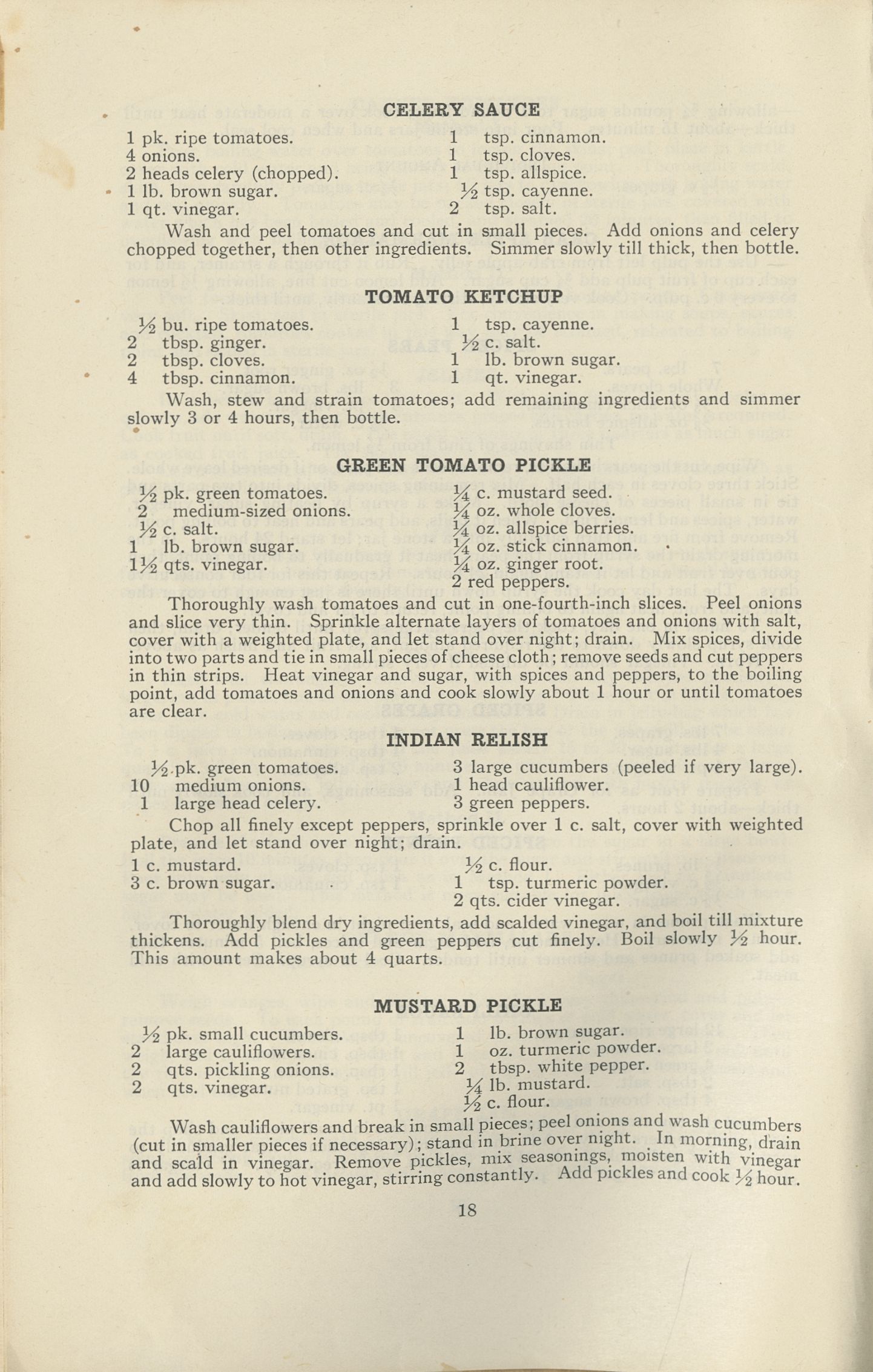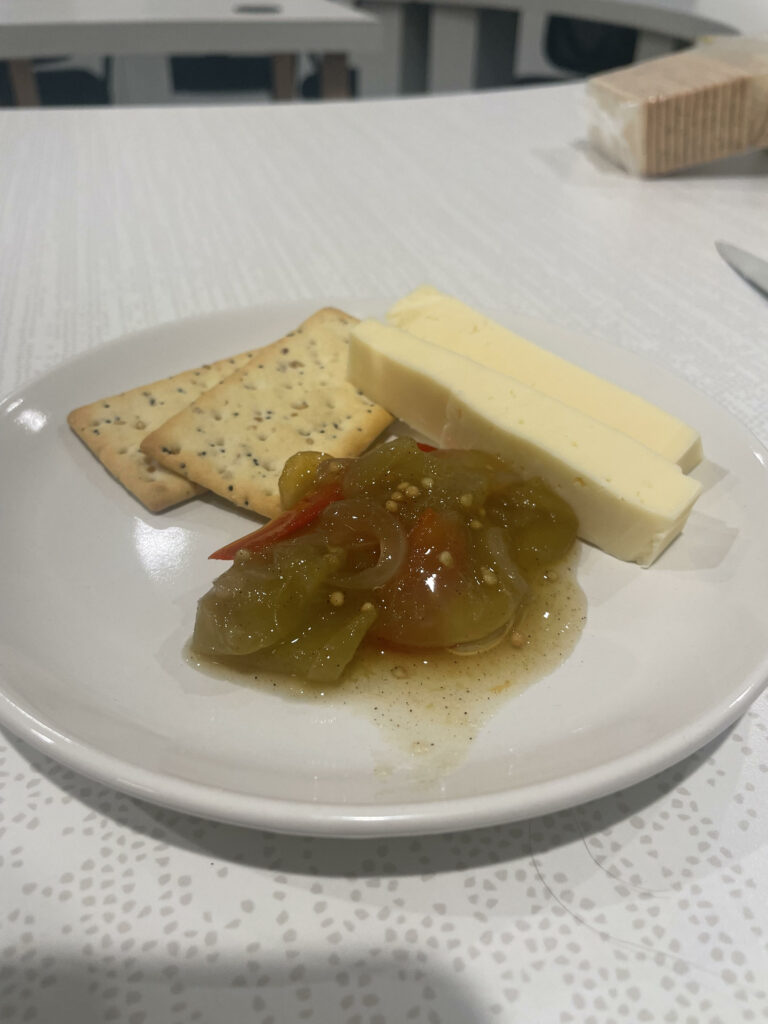Taste of History is a new limited-run blog series exploring old-school recipes and food culture found in archival collections. This month we wanted to try a creative use for our fall harvest with pickled green tomatoes!
The recipe we used comes from the 1933 Household Science Book of Recipes, edited by Annie L. Laird and Edna W. Park. When looking at the recipe I was initially confused by the ingredient list which included “1/2 pk. green tomatoes.” I had absolutely no idea what that meant. A quick google search suggested it was ½ a package, which didn’t make any sense. After all, there is no standardized packaging for tomatoes, and even if there were, it would not be consistent with 1933. When complaining about this, one of my colleagues told me it was a “peck,” a unit of measurement I had only heard of in relation to Peter Piper and his pickled peppers.
A “peck” is a measure of volume that initially came into use in the 14th century, equal to ¼ of a bushel, or 2 gallons. It was initially used as a measure for grains and flour. Some merchants were so exact in their measures that it was standardized to rap on the side of the container exactly once with a specific stick to settle the grain as part of the measuring process. The use of a “peck” as a measure of unit became less common after the 19th century.
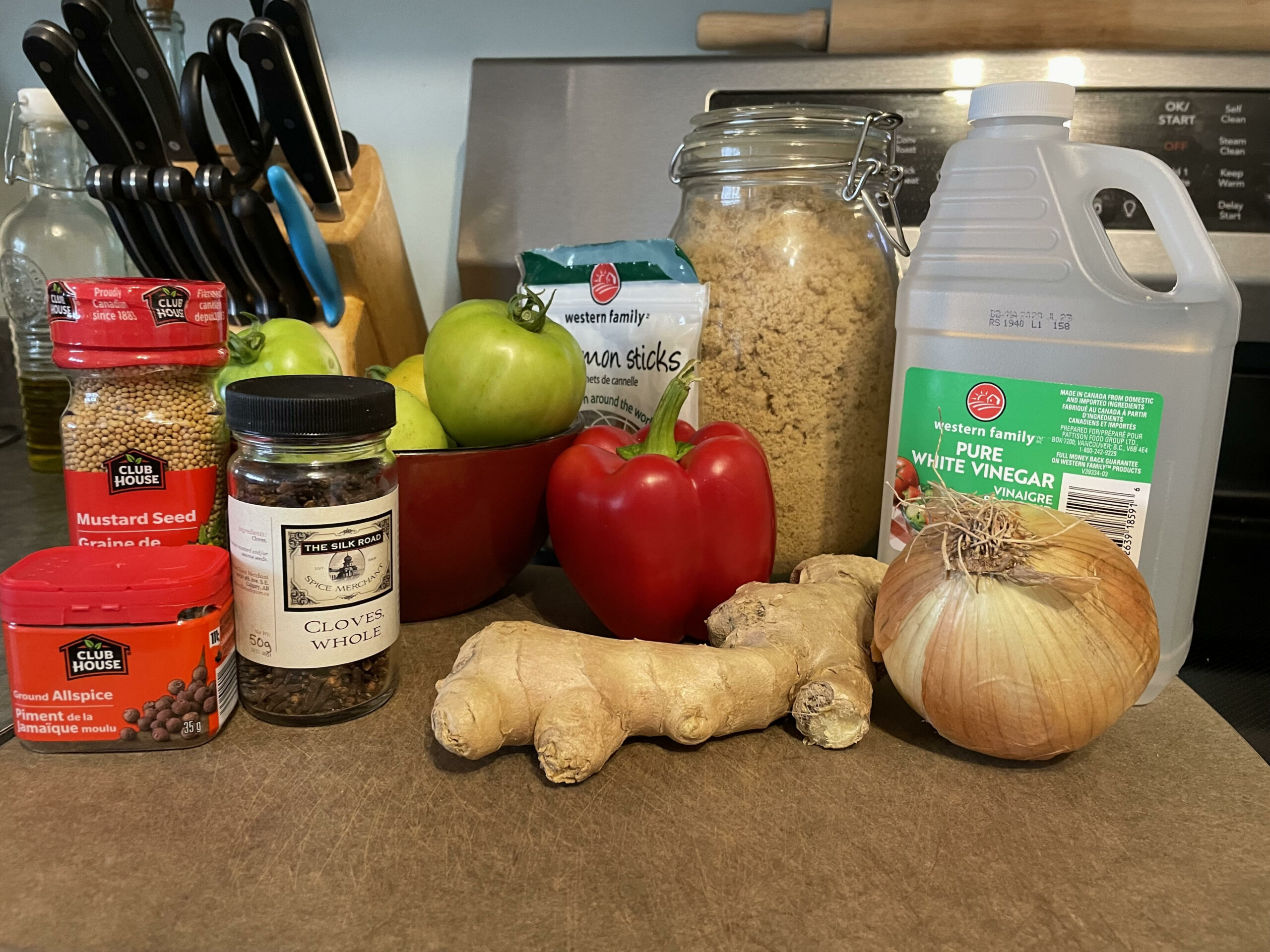
Armed with the translated measurement for the tomatoes, I was able to get started on the recipe. Since this was meant to be a trial, I quartered the recipe to make only one large jar of pickles, using 5 tomatoes. After slicing the tomatoes and the onion, I layered them with salt to pull the moisture out overnight. The following morning, I heated the vinegar, sugar, spices and peppers to the boiling point and then added the tomatoes and onion and cooked it on low for one hour. I tried not to bring the heat up too high, because I didn’t want to overcook the tomatoes and end up with a tomato sauce. Unfortunately, my packet of spices opened during the cooking so some mustard seed was mixed into the brine, but otherwise the cooking process went fairly smoothly.
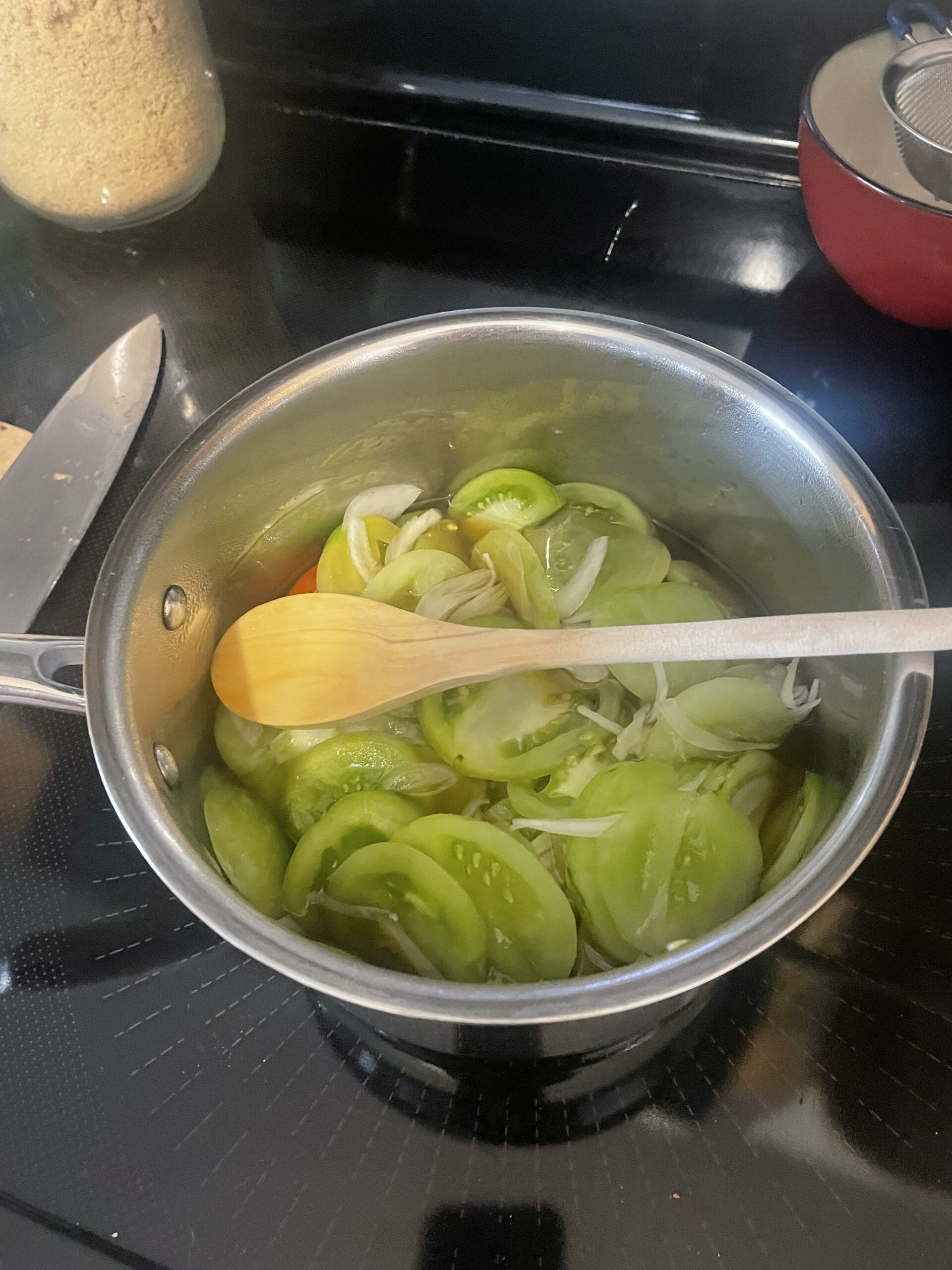
Rather than going through the full canning process, since I was only making one jar, I made refrigerator pickles. The hot mixture is placed in a jar, and the cooling of the content helps to vacuum seal the jar. Please note, this does not make a shelf stable product. They must be kept in the refrigerator, and can only be kept for a few weeks.
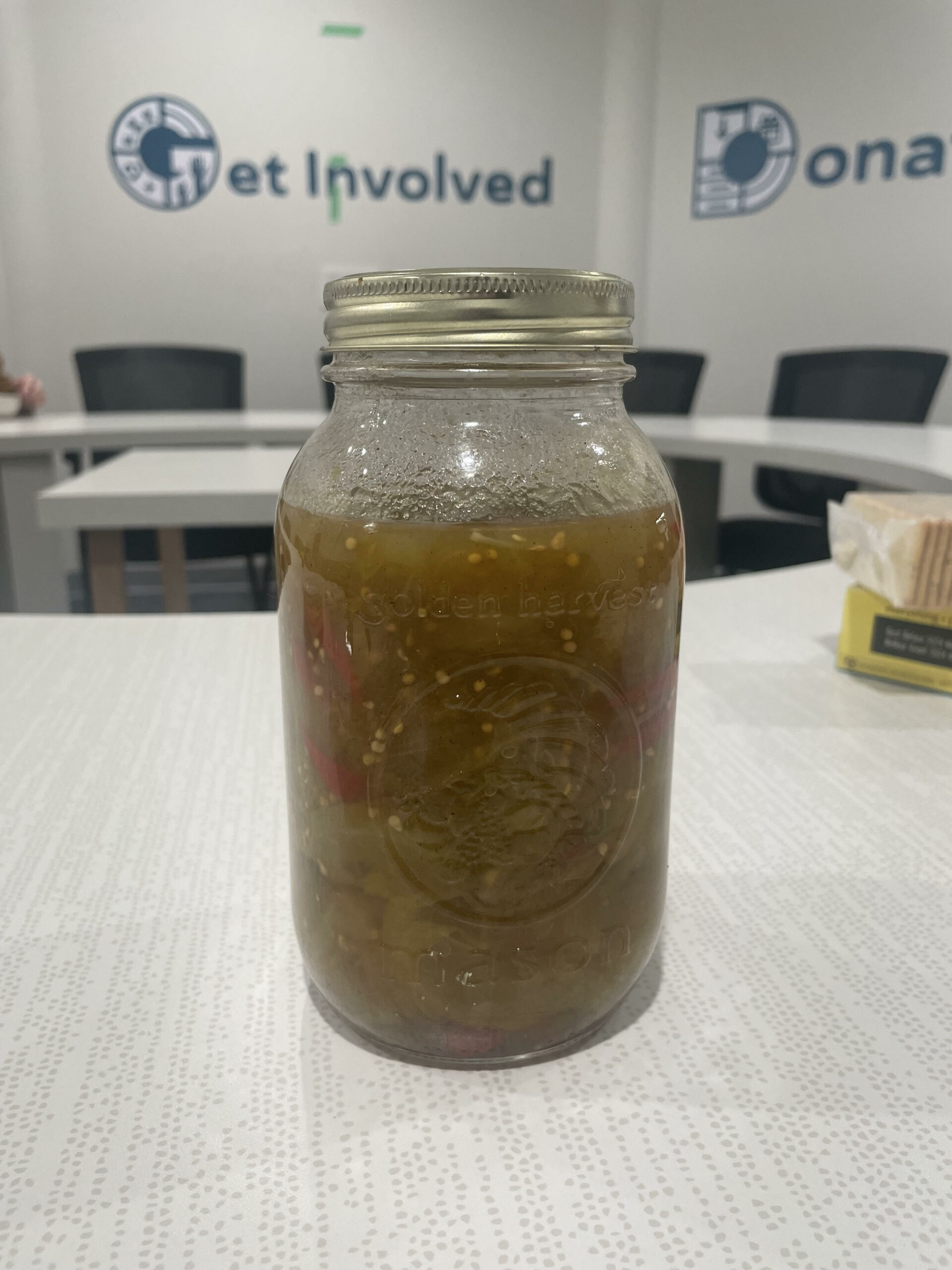
After five days in the fridge, we tasted the finished project, and it was delicious. We had it with cheese and crackers, but I also think it would pair really well with a sandwich, or a beef dish. They will definitely become a regular addition to my fall tomato preservation.
